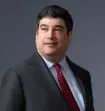On April 30, 2020, the Federal Reserve Board announced expanded loan offerings and terms for the forthcoming Main Street Lending Program.1 Originally unveiled on April 9, the program is designed to provide assistance to firms that are too large to qualify for the Small Business Administration's (SBA) Paycheck Protection Program (PPP) (although borrowers that receive loans under the PPP are not disqualified from the Main Street Lending Program), not large enough to access corporate debt markets, and not eligible for the Federal Reserve's lending facilities for investment-grade companies.2
As revised, the Main Street Lending Program is now open to larger businesses with up to 15,000 employees or $5 billion in 2019 annual revenue (previously up to 10,000 employees or $2.5 billion in 2019 annual revenue). The minimum size of certain loans was also reduced to $500,000 from $1 million to help provide assistance to smaller businesses.
The revised terms incorporate several refinements proposed by stakeholders, such as changing the reference rate from SOFR to LIBOR and permitting EBITDA to be calculated on an adjusted basis. The new terms also provide clarity on eligibility requirements for borrowers and lenders. However, the revised program retains several terms and conditions that were not viewed favorably by some prospective participants, including the underwriting and risk-sharing structure for lenders and restrictive covenants and commitments required of borrowers. The revised terms also impose additional borrower eligibility requirements that may prevent certain types of companies from obtaining Main Street loans, including certain finance companies, life insurance companies, private equity funds (and their portfolio companies), and hedge funds.
This Legal Update provides an overview of the Federal Reserve's revisions to the Main Street Lending Program. A forthcoming Mayer Brown Legal Update will provide detailed analysis of these revised terms and conditions and the implications for lenders and prospective borrowers in various industries.
Highlights of Revised Program
The overall structure of the revised Main Street Lending Program is generally consistent with the structure outlined in the initial April 9 announcement. The largest changes are the expanded scope of the program, the addition of a third lending facility, and the incorporation of the affiliation and ineligible business concepts from the PPP, but many smaller yet substantive changes and clarifications will also shape how the program is administered and which companies will be eligible. The following sections summarize several of the most significant changes.
LARGER COMPANIES NOW ELIGIBLE TO PARTICIPATE, BUT MUST COUNT "AFFILIATES"
The initial program terms limited eligibility to companies with either fewer than 10,000 employees or less than $2.5 billion in 2019 annual revenue. The revised terms now allow companies to be eligible if they have fewer than 15,000 employees or less than $5 billion in 2019 annual revenue. However, the revised terms clarify that the employees and revenue of a company must be aggregated with the employees and revenues of its affiliated entities using the SBA's affiliation rules (the same rules applied for the PPP, with certain exceptions). These rules generally require companies to aggregate their employees and revenues of their parent companies and other commonly controlled companies. This may result in some companies, particularly companies controlled by private equity funds that also own other portfolio companies, being deemed too large to be eligible for the program.
NEW "PRIORITY LENDING FACILITY"
As originally announced, the Main Street Lending Program envisioned two facilities: the Main Street New Loan Facility ("MSNLF") for new loans and the Main Street Expanded Loan Facility ("MSELF") for upsized tranches of existing loans.
The program will now also include a third facility, the Main Street Priority Loan Facility ("MSPLF"). Like the MSNLF, the MSPLF will purchase participations in eligible new loans. However, the MSPLF will allow lenders to originate new loans to borrowers with greater leverage than permitted under the MSNLF if the lenders retain a greater interest in the loan (15% versus 5%). At the time of origination and at all times thereafter, the MSPLF loan must be senior to or pari passu with, in terms of priority and security, the borrower's other loans or debt instruments (other than mortgage debt), which is likely to create challenges for many companies that would need the consent of their existing creditors to grant pari passu liens to secure the MSPLF Loan and potentially negotiate intercreditor arrangements. Helpfully, at the time of origination of the loan, borrowers may refinance existing debt owed by the borrower to a lender other than the lender for the MSPLF loan.
ADDITIONAL BORROWER ELIGIBILITY REQUIREMENTS
The revised terms impose additional borrower eligibility requirements that were not included in the initial program terms. These new restrictions link borrower eligibility for the Main Street Lending Program to some of the same SBA rules and regulations that govern the PPP, including the SBA's "Ineligible Business" regulations (as well as the affiliation rules described above). As incorporated into Main Street, these "Ineligible Business" regulations may prevent certain types of businesses from being eligible for the Main Street Lending Program, including certain finance companies, life insurance companies, private equity firms, and hedge funds.
NO RELIEF FROM RESTRICTIONS AND CONDITIONS ON BORROWERS
The restrictions and conditions on borrowers included in the initial terms and conditions are largely unchanged. As with the initial program terms, borrowers must agree to the compensation, stock repurchase, and dividend restrictions that apply to direct loan programs under Title IV of the CARES Act. However, the revised guidance does clarify that the restrictions on dividends and other capital distributions will not apply to distributions made by an S corporation or other tax pass-through entity to the extent reasonably required to cover its owners' tax obligations in respect of the entity's earnings.
Borrowers seeking Main Street loans must commit to make "reasonable efforts" to maintain payroll and retain workers but are not required to maintain specific levels (as is required for forgiveness under the PPP). The revised guidance does not provide much additional clarity on the meaning of "reasonable efforts," defining the phrase as "good-faith efforts to maintain payroll and retain employees, in light of [the borrower's] capacities, the economic environment, its available resources, and the business need for labor." However, the guidance does clarify that companies that have already laid off or furloughed workers as a result of the disruptions from COVID-19 are still eligible to apply for Main Street loans.
LOANS ORIGINATED BY BANKING ORGANIZATIONS ONLY
The loans for all three facilities will be originated through "Eligible Lenders," which include U.S. federally insured depository institutions, their U.S. holding companies, and their non-bank subsidiaries. The revised guidance clarifies that U.S. branches or agencies of foreign banks and U.S. intermediate holding companies of foreign banking organizations are eligible to participate. At this time, nonbank financial institutions (including credit funds) are not considered "Eligible Lenders," but the Federal Reserve indicated that it is considering options to expand the scope of eligibility in the future.
LENDERS BEAR UNDERWRITING BURDEN
Unlike the SBA with the PPP, the Federal Reserve has determined that the eligibility criteria for the Main Street Lending Program are to be treated as "minimum requirements" and that the final underwriting decision ultimately falls to the lender.
To meet the Main Street Lending Program's "minimum requirements," borrowers must have been in "sound financial condition" prior to the onset of the COVID-19 pandemic, meet the loan facility's EBITDA requirement, and certify that they have a "reasonable basis" to believe that they have the ability to meet their financial obligations for at least the next 90 days and do not expect to file for bankruptcy during that time period.
However, even if these requirements are met, borrowers must also meet the lender's own underwriting requirements, which may exceed those imposed by the Federal Reserve. Lenders are expected to assess each potential borrower's financial condition and apply their own underwriting standards to evaluate the borrower's creditworthiness. Given that that lenders are required to retain a portion of the loans (5% under the MSNLF and MSELF and 15% under the MSPLF), lenders would likely be incentivized to do so in any event. As a result, it is possible that businesses that otherwise meet the borrower eligibility requirements still may not be approved for a loan (or not receive the maximum allowable amount) based on the lender's own underwriting criteria.
Footnotes
1. Federal Reserve, Federal Reserve Board announces it is expanding the scope and eligibility for the Main Street Lending Program (Apr. 30, 2020), https://www.federalreserve.gov/newsevents/pressreleases/ monetary20200430a.htm
2 For analysis of the Main Street Lending Program's initial terms, see Mayer Brown's Legal Update U.S. Federal Reserve Announces Main Street Lending Program to Provide Financing to Small and Mid-Sized Businesses (April 10, 2020), https://www.mayerbrown.com/en/perspectivesevents/publications/2020/04/us-federal-reserveannounces-main-street-lending-program-to-providefinancing-to-small-and-midsized-businesses. More information on the programs available for large employers and small businesses can be found in the following Mayer Brown publications: US Treasury and Federal Reserve Announce Two New Corporate Credit Facilities for Large Employers (Mar. 25, 2020), https://www.mayerbrown.com/en/perspectivesevents/publications/2020/03/us-treasury-and-federalreserve-announce-two-new-corporate-credit-facilities-forlarge-employers ; Federal Reserve launches commercial paper funding facility (Mar. 24, 2020), https://covid19.mayerbrown.com/governmentfederal-reserve-launches-commercial-paper-fundingfacility/; Legal Update on Section 4003 of the CARES Act - Liquidity for Eligible Businesses, States, and Municipalities (Mar. 31, 2020), https://www.mayerbrown.com/en/perspectivesevents/publications/2020/03/legal-update-on-section4003-of-the-cares-act-liquidity-for-eligible-businessesstates-and-municipalities.
To view the full article click here
Originally published 01 May 2020
Visit us at mayerbrown.com
Mayer Brown is a global legal services provider comprising legal practices that are separate entities (the "Mayer Brown Practices"). The Mayer Brown Practices are: Mayer Brown LLP and Mayer Brown Europe - Brussels LLP, both limited liability partnerships established in Illinois USA; Mayer Brown International LLP, a limited liability partnership incorporated in England and Wales (authorized and regulated by the Solicitors Regulation Authority and registered in England and Wales number OC 303359); Mayer Brown, a SELAS established in France; Mayer Brown JSM, a Hong Kong partnership and its associated entities in Asia; and Tauil & Chequer Advogados, a Brazilian law partnership with which Mayer Brown is associated. "Mayer Brown" and the Mayer Brown logo are the trademarks of the Mayer Brown Practices in their respective jurisdictions.
© Copyright 2020. The Mayer Brown Practices. All rights reserved.
This Mayer Brown article provides information and comments on legal issues and developments of interest. The foregoing is not a comprehensive treatment of the subject matter covered and is not intended to provide legal advice. Readers should seek specific legal advice before taking any action with respect to the matters discussed herein.





